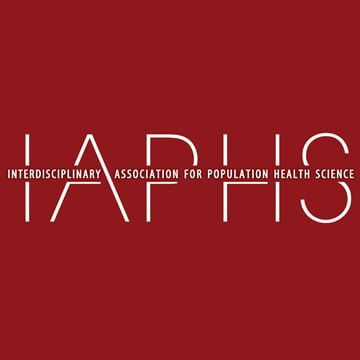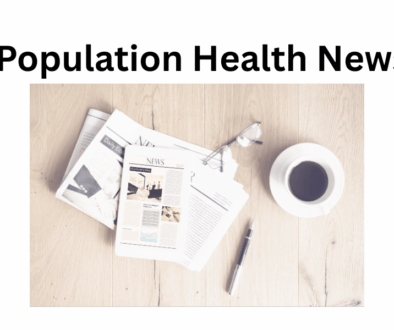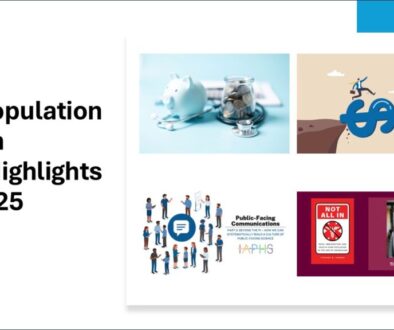Population Health News Roundup: August 2021
JoAnne DyerIAPHS Members in the News
Mark Hayward on “Washington Journal” via C-SPAN: The pandemic is “a major shock to our mortality,” comparable to and unseen since World War II. (August 11, 2021)
Rita Hamad in the American Journal of Preventive Medicine: Paid family leave polices “improved mental health among parents, with mixed feelings among children, including positive, negative, or no changes in mental health, depending on the subgroup.” (AJPM, June 28, 2021)
Roland J. Thorpe Jr. in a new NASEM Consensus Study Report: To reduce the impacts of dementia over the next decade, the authors look at the risks, preventative factors, effects on caregivers and family, economic costs, and the community aspects and conditions associated with dementia. Research priorities and strategies are suggested. (Reducing the Impact of Dementia in America: A Decadal Survey of the Behavioral and Social Sciences, 2021)
Disparities
States working to vaccinate Latinx communities: COVID vaccination rates for Latinx communities are lagging behind, and some locations are trying to close the gaps. In Montgomery County, Maryland, an abuela is helping. (Seattle Times, August 8, 2021; Washington Post, August 8, 2021)
People with disabilities are underserved in health disparity policy, research, and advocacy: Individuals with disabilities (including intellectual and developmental disabilities), face health disparities such as “worse access to care, lower care quality, and worse clinical outcomes….” The authors, led by Harold A. Pollack, urge a “deep and comprehensive response” from researchers and policymakers. (Milbank Quarterly, July 23, 2021)
Gestational diabetes rates have increased, especially among Asian Indians: From 2011 to 2019, “[G]gestational diabetes rates among individuals with a singleton first live birth increased across all race and ethnicity subgroups in the US…” (JAMA, August 17, 2021)
Rise in suicide rates among people of color is a “crisis”: Young people of color are especially at risk, with Black kids younger than 13 dying by suicide at a rate nearly twice that of White kids. (Kaiser Health News, August 23, 2021)
Place and Built Environments
 In Brooklyn’s largely Black and Latinx neighborhoods, an affordable housing shortage contributes to health disparities: Many residents live with “severe crowding,” which leads to a greater risk of COVID-19, and the Heat Vulnerability Indexes tend to be higher. (CityLimits.org, August 4, 2021)
In Brooklyn’s largely Black and Latinx neighborhoods, an affordable housing shortage contributes to health disparities: Many residents live with “severe crowding,” which leads to a greater risk of COVID-19, and the Heat Vulnerability Indexes tend to be higher. (CityLimits.org, August 4, 2021)
Tree inequities mapped: Poorer communities have 41% fewer trees than wealthier communities do, according to a new mapping project. (Bloomberg CityLab, June 25, 2021)
How is public transit linked to health?: What’s coming next, now that investment in public transit has been included in the new infrastructure plan? (HealthAffairs This Week podcast episode, August 13, 2021)
Environmental Health & Justice
People with disabilities are left out of environmental justice research: Little research is available, but a recent study showed that polluted neighborhoods in Houston have more residents with disabilities than do other city neighborhoods. A lack of data on disability in general is also to blame. (Environmental Health News, August 31, 2021)
Stop discharging human sewage into our property, say some Centerville, Illinois residents: Residents of this largely Black community are fighting back against chronic flooding and sewage release. (NewsOne, August 22, 2021)
Getting the lead out of airplane fuel: Communities of color and children are more likely to experience higher lead levels linked to nearby airports. Calls for regulating aircraft lead pollution are getting louder. (EarthJustice, August 24, 2021)
Policy
Cannabis legalization and population health: Better research is needed on characteristics of cannabis supply and on the effects of cannabis legalization on specific populations. Future policy should be informed by public health priorities, say the authors. (Health Affairs, July 1, 2021)
What happens when public health is downsized and privatized? Ask Detroit: The Detroit Health Department employs 270 people, down from 700, and their influence has waned. (Kaiser Health News, August 6, 2021)
Huge increase coming for SNAP recipients: The average monthly benefit ($121) will rise by $36, and “the new maximum will rise to $835 a month for a family of four.” (NBC News, updated August 16, 2021)
Public charge rule led immigrants to forgo benefits: Adding Medicaid and SNAP benefits to the public charge rule likely led millions of essential workers to avoid applying for these benefits just before the pandemic. (Health Affairs, July 2021)
The CDC’s focus on individual behaviors worsens inequities: A focus on individual responsibility for health in the COVID era is “undermining the idea that fighting COVID is a ‘public’ health responsibility that requires the support of institutions and communities.” (The Lancet, Commentary August 1, 2021)









All comments will be reviewed and posted if substantive and of general interest to IAPHS readers.